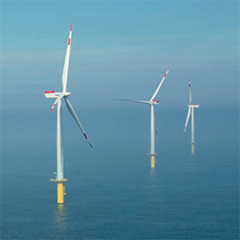The offshore wind installation industry, is faced with the challenge of investing in next generation installation equipment, for the installation of wind turbines that are still on the drawing board. This brings a lot of uncertainties. What we know for sure is that in the past the growth rate of turbine size and weight consistently outpaced the predictions. As a consequence, the main challenge is striking the right balance: invest in a jack-up that can do all; you may be too expensive in the first few years to be competitive. Or, invest little and start off with a smaller jack-up; you may be out of business soon for not being able to handle the increasing size and weight of the future wind turbines.
GustoMSC has a strong position in the renewable business, and in particular in the design of offshore wind installation jack-ups and delivery of the key equipment to those vessels, such as the jacking system and main crane. GustoMSC explains how only with proper balancing of requirements and smart innovations, the outward spiral of increasing size, weight, carbon footprint and cost can be mitigated.
GustoMSC’s role is to provide its clients with well-balanced solutions, which must include robustness to deal with a reasonable, foreseeable future growth at an affordable rate, whilst striving to minimize the carbon footprint. This brings together a challenging mix of competing requirements. Larger and heavier wind turbine components need to be installed offshore at a greater altitude.
In comparison to today’s offshore wind turbines, we expect the primary dimensions, such as tower height and blade length to increase by roughly 50%, and we expect the mass of the components to increase by roughly 100% in a period of 5-10 years. The typical design lifetime of a jack-up is 20-25 years.
It is easy to see the direct link between wind turbine component sizes to be installed and the size of the equipment needed to install those components. Transport of larger and heavier components typically requires a bigger hull capacity. Installing heavier components at a greater height, requires a more than linear increase in crane capacities.




























